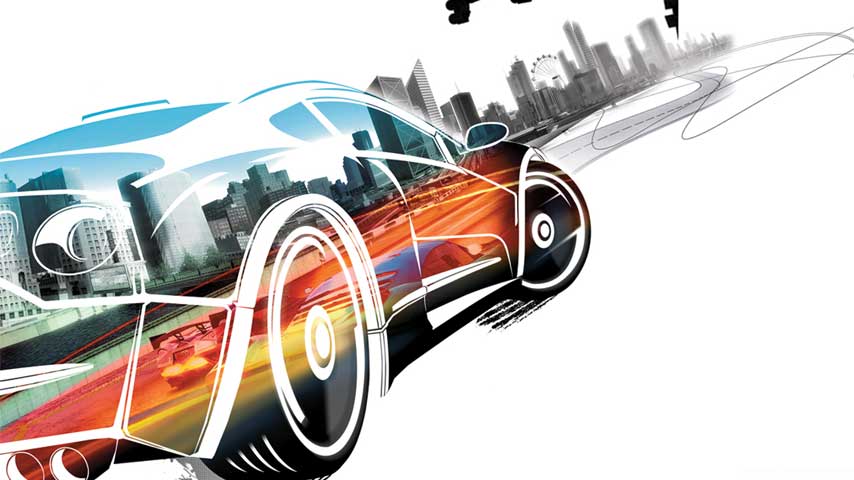Burnout Revenge: Almost a Perfect Sequel
5 min read
Burnout 3: Takedown was a legendary racing game by all accounts. Everything about the game was iconic at the time, and as a result it holds a special place in many gamers’ hearts. Burnout 3 was released on September 7, 2004, developed by Criterion games and Published by EA. Takedown received unanimous praise for all the new ideas it brought to the racing genre. Burnout 3 was the first game in the series to introduce takedowns. This new mechanic allows the player to run into other drivers and cause them to crash into a wall, another car, or off a cliff. Criterion even made a completely new game mode based off this mechanic: Road Rage. The goal here is to take down as many cars on a standard racing map before your car is destroyed. In combination with the aftertouch mechanic, allowing a player to steer their crashed car into other racers, this expanded the gameplay far beyond what the racing genre was accustomed to. Criterion made sure that two goals were satisfied in Burnout 3: Speed and Destruction. They didn’t worry about tuning cars for optimal performance, like their more serious counterpart, Need For Speed did. Instead, Criterion focused on empowering the player regardless of the car they were using.
A year and a few days later, on September 13, 2005, Criterion released the sequel; Burnout: Revenge. Revenge offered many of the same praises from critics as its predecessor, and even upped the ante in carnage, allowing for a more explosive experience. Revenge took everything wonderful about Takedown and ramped it up to 11, Spinal tap style. For the first time, players could run through traffic in races and Road Rage instead of impact instantly demolishing their cars, forcing them to the back of the race upon respawn. This small mechanic added an element of strategy to the game, forcing the player to choose more carefully which side of the road they wished to drive on. Driving towards oncoming traffic allows the player to build boost through the oncoming and near miss boosts, albeit with the fear of all progress coming to a sudden stop at one wrong turn. Driving on the correct side not only added safety to the player, but allows use of the traffic check mechanic, allowing players to plow through cars in their lane and use them as projectiles, cutting off their opponents and get an extra edge on the race. Criterion utilized this mechanic in a brand new game mode called “Traffic check” where the goal is to run into as many cars as possible, forcing the player to go against their instinct to avoid traffic and dive in head first. Even 10 hours into gameplay, I still found myself swerving to avoid the very traffic I was meant to hit.
Crashbreaker Races and Road Rage are two new sub-modes, augmenting the modes we’ve grown accustomed to in the previous entry. In these, whenever the player crashes, they can use a Crashbreaker explosion, previously only used in the crash mode, to hopefully blow up any opponents on their heels. This, of course, comes at a cost. In Road Rage, using the Crashbreaker diminishes the health of the player’s car, which could cause a premature end to the stage. In races, the Crashbreaker will take the most precious resource you have: time. In the event you can take down other racers, you’ll be rewarded with points in Road Rage, and respawning ahead of them in races. This mode is a balancing act, further encouraging strategic maneuvers during fast paced gameplay.
Despite these accomplishments, when people talk about the Burnout series, Revenge ends up getting ignored more often than not. Even though Revenge held critical acclaim rivaling that of Takedown, it had various shortcomings that stunted its chances to be placed on the same pedestal. The lack of a single player arcade mode, where a player can race any track using any vehicle is missing from the game entirely. Multiplayer exists, and allows these features, but lack of a single player experience outside of the campaign takes away from the entire experience and diminishes the value of all the unlocked cars players earn throughout the campaign. While it could be argued that a player could just revisit the campaign and play through their favorite missions again, it limits the freedom of the player. Some of the best experiences of Takedown was picking a random course on Road Rage and seeing how many cars they can take down before their cars inevitably meet their demise. The Campaign missions in Revenge stout a time limit that is increased every few takedowns, however the time limit stops increasing after the target is reached, limiting the player’s ability to test their limits under freeform setup.
Another issue Revenge faces, keeping it from being the perfect sequel it was slated as, was the selection of cars. While Takedown had each car type in its own circuit, Revenge gives you cars as you progress through the ranks, delivering a wide variety that amounts to nothing in the end. Instead of a split between circuits, the three main game modes each have their own vehicles to choose from. You no longer get to play Road Rage with a car built for speed, or attempt to race in a Hot Rod with flames on the side, instead you’re limited to what’s given to you. On top of that every car you earn is leagues ahead of the previous, rendering old cars useless unless the player just explicitly wants a challenge. The different body types of a vehicle are also meaningless outside of racing. No matter if the car is small, medium, or large, they cannot take down buses ahead of them, and crash into other cars with the same intensity.
Burnout Revenge is truly a remarkable game; Its sense of speed and varied locations were remarkable for the time and continue to amaze me to this day. It improved on everything Burnout 3: Takedown did and made it flashier and smoother along the way. Unfortunately its drawbacks limited replayability and lack of meaningful car choices constricted the player’s ability to have a free flowing experience. Ultimately these downfalls have ushered Burnout to join the others in the franchise of obscure, as Burnout 3: Takedown, and Burnout: Paradise share the limelight in the eyes of gamers.



